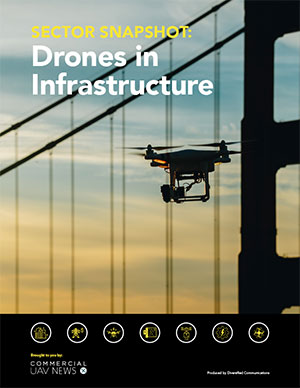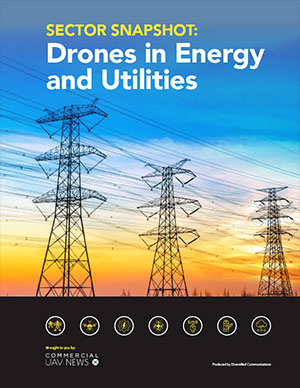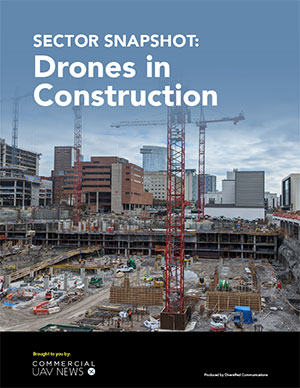On March 13, three universities, Embry Riddle Aeronautical University; Kansas State University and Wichita State University, under the sponsorship of the Federal Aviation Administration (FAA) released a report titled “Small Unmanned Aircraft System (sUAS) Traffic Analysis (A11L.UAS.91) Final Report”
The report is relevant in many different aspects, but one that is particularly worrisome is the risk assessment. According to the executive summary of the report: “This project aimed to provide objective insight into low altitude traffic in the National Airspace System (NAS) using empirical data. Fixed, Remote Identification (ID) sensors were placed at selected locations throughout the United States to capture sUAS activity and telemetry data. The primary objectives of this project were to: (1) identify, assess, mitigate, and monitor for sUAS safety hazards; (2) determine the effectiveness of existing sUAS regulations; (3) accurately forecast sUAS traffic levels; and (4) aid in identifying and assessing future aviation risk.”
As we know, the bulk of the risk involving an accident or an incident between a drone and a crewed aircraft is around airports. There are two main reasons: one is that drones operate mostly at low altitudes (400 feet Above Ground Level – AGL – or less) and second is the fact that traditional aircraft at this altitude and near airports are either taking off or landing. In both cases, airplanes are low and slow, a dangerous combination that does not allow for extra maneuverability and leaves very little margin for errors and evasion reactions.
Regarding the safety risks associated with adding drones to the National Airspace System (NAS) in large quantities, the report is vey clear: “Operational trends reveal several areas of concern, including altitude exceedance issues, with some flights surpassing the 400-foot regulatory ceiling and posing potential risks to manned aviation. Many operations are concentrated in residential neighborhoods, increasing the likelihood of encounters with manned aircraft in those areas. Short flight durations, typically under 35 minutes, present transient risks but also limit opportunities for intervention. Furthermore, sUAS activity is notably higher near aerodromes and heliports, with some flights exceeding altitude limits, posing potential safety hazards to low-flying aircraft. Most flights occur in calm weather and daylight hours, while current nighttime operations remain minimal, but could increase with the expansion of commercial applications, such as package delivery.”
While the report does not explicitly detail Part 108 regulations, it references the looming impact of BVLOS (Beyond Visual Line of Sight) operations, which are expected to be governed under Part 108 once finalized. The fact that they use the term ‘commercial applications’ in the previous paragraph seems to indicate that they know there will be an increase of traffic once drones can fly beyond the visual range of the operator or Pilot in Command (PIC). Researchers specifically caution that BVLOS expansion (especially in urban centers like Dallas-Fort Worth) could intensify drone traffic and elevate integration risks. They emphasize the need for proactive safety frameworks to accommodate this regulatory shift.
The key findings of the report are:
Altitude Violations: Of the 6,037 flights with altitude data, 573 operated between 400–500 feet, and 781 exceeded 500 feet—well above the FAA’s 400-foot ceiling for sUAS. These flights accounted for roughly 10% of total cumulative flight time in airspace typically reserved for manned aircraft.
Heliport Risks: Drones were frequently detected within 3,000 feet of heliports, which are often not marked on aeronautical charts, increasing collision risk. The report recommends charting heliport locations to improve situational awareness for drone pilots.
Urban Hot Spots: Residential neighborhoods and urban areas emerged as high-risk zones due to frequent low-altitude drone activity. These areas pose challenges for emergency helicopters and future AAM (Advanced Air Mobility) operations.
Remote ID Limitations: While Remote ID has been mandatory since 2023, only about 50% of Part 107-registered drones were compliant by mid-April 2025. The study found that most Remote ID signals were received within a 1-mile radius of sensors, revealing gaps in transmission range and data coverage.
Geofencing Concerns: The removal of geofencing by DJI—whose drones made up nearly 90% of those tracked—was flagged as a major safety risk. Without automated restrictions, drones can now enter TFRs, No Drone Zones, and critical infrastructure areas more easily.
Given that by the time of the release of the report, the FAA had already missed a deadline to publish Part 108 NPRM (Notice of Proposed Rulemaking) it is safe to assume that the federal agency is looking seriously at the recommendations of the report. Here is a list of the risk and the recommendations based on it:
1. Altitude Violations and Airspace Intrusion
- Risk: Drones exceeding the 400-foot ceiling pose collision hazards to low-flying crewed aircraft, especially helicopters and future AAM vehicles.
- Data Insight: 1,354 flights exceeded 400 feet; these accounted for ~10% of all observed flight hours.
- Implication: Without automated altitude control or strong enforcement mechanisms, BVLOS operations under Part 108 may exacerbate these conflicts by expanding the permissible operating envelope.
2. Heliport Proximity and Uncharted Risks
- Risk: Drones operating near heliports—many unlisted on FAA charts—present acute collision potential during emergency medical or law enforcement missions.
- Recommendation: Mandate heliport charting and dynamic airspace awareness for BVLOS-capable drones to support pre-flight risk mitigation strategies.
3. Urban Overflight in Residential Areas
- Risk: Concentrated drone activity in densely populated zones increases risk of mid-air collisions, loss of control incidents, and public backlash.
- Policy Exposure: Current FAA guidance discourages low-level flight over homes but lacks enforceable restrictions.
- Part 108 Connection: BVLOS certifications must address overflight limitations, especially for delivery and surveillance missions through urban corridors.
4. Remote ID Signal Gaps
- Risk: Limited broadcast range (~1 mile radius) means that many sUAS flights may remain invisible to traffic management systems, impeding detect-and-avoid protocols.
- Compliance Shortfall: Only 50% of drones were Remote ID compliant as of April 2025.
- Part 108 Outlook: BVLOS operations will require real-time positional data; reliance on localized Remote ID could undermine broader situational awareness.
5. Removal of Geofencing Restrictions
- Risk: DJI’s removal of automatic geofencing exposes critical infrastructure and restricted areas to intrusion, whether intentional or accidental.
- Implication for BVLOS: Without automated geofencing or route lockouts, BVLOS missions may enter sensitive zones with minimal pilot awareness, creating legal and safety liability.
Strategic Mitigation Recommendations
- Develop federated Remote ID receiver networks to monitor BVLOS operations beyond broadcast range.
- Enforce Part 108 pre-certification criteria for airspace deconfliction tools (e.g., ADS-B In, networked detect-and-avoid).
- Introduce mandatory BVLOS pilot risk profiling, accounting for mission geography, equipment redundancy, and network connectivity.
- Require dynamic flight corridor allocation in urban areas based on real-time drone density maps and public safety needs.
Looking at the data, the report findings and the specific recommendations it is easy to assume that the FAA, which has already missed another strong deadline (July 6), this one from the new administration in Washington, is looking at these recommendations and is trying to add them to the NPRM. Let us all hope that the FAA will have some news on that front when we reach Commercial UAV Expo in just a few weeks in Las Vegas.
For a complete version of the report go to https://assureuas.org/wp-content/uploads/2021/06/A50-Final-Report_v9.pdf















Comments